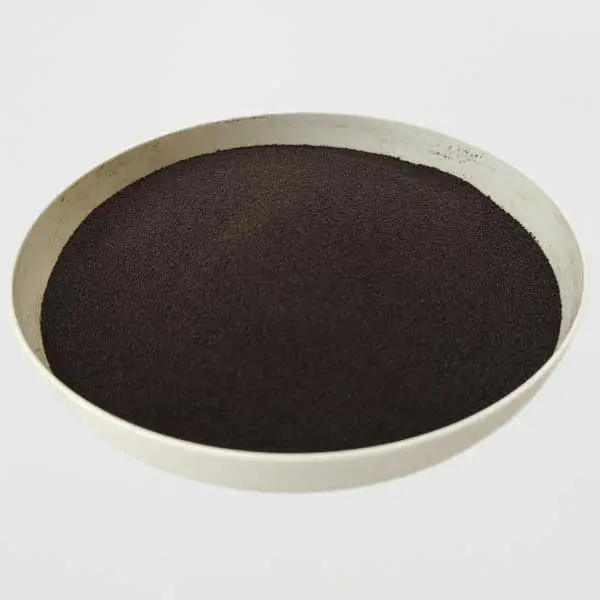What is the difference between sodium lignosulfonate and calcium lignosulfonate?
The world of industrial additives is full of complex chemicals with various uses, and lignosulfonates are no exception. You may have come across terms like sodium lignosulfonate and calcium lignosulfonate while exploring products in construction, agriculture, or manufacturing. But what do these terms mean, and how do these substances differ? Let’s delve into the details to understand the key distinctions and why it matters.
What are Lignosulfonates?
Lignosulfonates are a byproduct derived from the sulfite pulping process used in the paper industry. They originate from lignin, a natural polymer found in the cell walls of plants. During the sulfite pulping process, lignin is separated from the cellulose fibers and then converted into lignosulfonates. These versatile substances are widely used in industrial applications due to their dispersing, binding, and stabilizing properties.
What is Sodium Lignosulfonate?
Sodium lignosulfonate is the sodium salt form of lignosulfonic acid. It is created when lignosulfonic acid reacts with sodium compounds, resulting in a product with excellent solubility in water. Sodium lignosulfonate is known for its dispersing capabilities, which help prevent particles from clumping together in various solutions.
Properties and Characteristics
Sodium lignosulfonate is highly soluble in water, making it ideal for applications where a liquid solution is needed. It exhibits strong dispersing properties, which are beneficial in industries like construction (e.g., concrete admixtures) and agriculture (e.g., pesticides). The compound also shows good binding abilities, making it suitable for use in adhesives and animal feed pellets.

sodium lignosulphonate powder
What is Calcium Lignosulfonate?
Calcium lignosulfonate is the calcium salt of lignosulfonic acid. It is produced by reacting lignosulfonic acid with calcium compounds. Compared to sodium lignosulfonate, it has a slightly lower solubility in water but offers stronger binding capabilities. This makes it particularly useful in applications that require enhanced adhesion or cohesion.
Properties and Characteristics
The main characteristic that sets calcium lignosulfonate apart is its strong binding properties. It is often used in products like animal feed pellets, dust suppressants, and certain types of construction materials where a strong bond is crucial. Although it is less soluble in water compared to sodium lignosulfonate, it still disperses effectively in various mixtures.

calcium lignosulfonate powder
Chemical Structure Comparison
The chemical structure of sodium and calcium lignosulfonates differs due to the presence of sodium and calcium ions, respectively. These ions affect the molecular interactions within the lignosulfonate, altering its properties:
Sodium lignosulfonate has sodium ions that contribute to its higher water solubility.
Calcium lignosulfonate has calcium ions that provide stronger ionic bonding, resulting in enhanced binding characteristics.
Solubility Differences
When it comes to solubility, sodium lignosulfonate is more soluble in water than its calcium counterpart. This makes it a go-to choice for applications where fast and complete dissolution is needed, such as in liquid dispersants and concrete admixtures. In contrast, the lower solubility of calcium lignosulfonate means it is better suited for applications where slower, controlled release is beneficial, like in certain binding or pelletizing processes.
Binding Properties Comparison
If you’re looking for strong binding abilities, calcium lignosulfonate is the better option. Its ionic structure forms more robust bonds, making it suitable for applications like animal feed binders and dust control agents. Sodium lignosulfonate, while also a capable binder, is generally favored for its dispersing qualities rather than sheer binding strength.
Applications of Sodium Lignosulfonate
Sodium lignosulfonate is utilized across a range of industries due to its dispersing and binding properties:
Concrete Admixtures: It acts as a plasticizer, enhancing the workability of concrete mixtures and reducing water requirements.
Agriculture: Used as a dispersant in pesticides and herbicides, ensuring even distribution of active ingredients.
Ceramics: Helps in the dispersion of ceramic particles during the manufacturing process.
Leather Tanning: Assists in softening leather by acting as a dispersant for tanning agents.
Applications of Calcium Lignosulfonate
Calcium lignosulfonate finds its place in industries that require robust binding:
Animal Feed Pellets: Acts as a binder, improving the cohesion of feed ingredients.
Dust Control: Used as a dust suppressant on roads, construction sites, and mines.
Construction Materials: Enhances the binding of various materials, making it useful in the production of wallboards and similar products.
Pelletizing Ores and Coal Briquettes: Serves as a binder for forming cohesive pellets.
Sodium Lignosulfonate vs. Calcium Lignosulfonate in Concrete Admixtures
Both sodium and calcium lignosulfonates are used in concrete admixtures, but they serve slightly different roles:
Sodium lignosulfonate improves the flowability of concrete, acting as a plasticizer and reducing the water needed for a workable mixture.
Calcium lignosulfonate, although also used in concrete, is less effective as a plasticizer but can still contribute to the overall bonding within the mix.
How to Choose Between Sodium Lignosulfonate and Calcium Lignosulfonate
When deciding which to use, consider the following factors:
Application Requirements: Does your project need better dispersion or stronger binding?
Solubility Needs: Will the product need to dissolve quickly in water?
Cost and Availability: Is budget a significant concern?
While both sodium and calcium lignosulfonates share a common origin, their unique properties make them suited for different applications. Sodium lignosulfonate is ideal for tasks requiring high solubility and dispersing power, while calcium lignosulfonate shines in applications needing strong binding. Understanding these differences ensures that you can make an informed choice for your specific needs.
Recommended Products
Related News About Construction Chemicals

 English
English 




